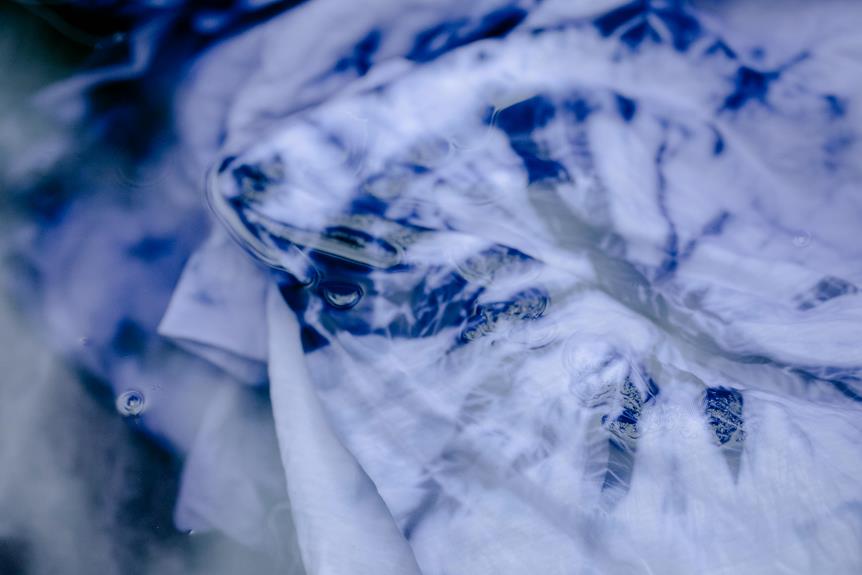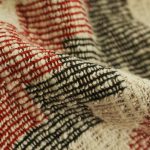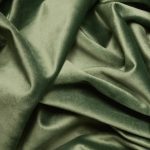You might be wondering about microsuede and its reputation for being water-resistant. While it does offer some protection against spills and stains, it's important to understand the nuances of its composition and treatment that contribute to this property. It's not entirely waterproof, and knowing how to care for it can significantly impact its longevity and appearance. So, what exactly happens when microsuede encounters moisture, and how can you ensure it remains in top condition? The answers could change how you approach this versatile fabric.
Table of Contents
Key Takeaways
- Microsuede is water-repellent due to a special treatment, allowing it to resist moisture while maintaining a soft texture.
- It is not completely waterproof; prolonged exposure to water can lead to absorption and damage.
- Quick action on spills is crucial to prevent moisture from affecting the fabric's appearance and durability.
- Regular cleaning and maintenance, including using a fabric protector, enhance microsuede's water resistance and stain protection.
Understanding Microsuede Composition
Microsuede is primarily made from polyester fibers that are tightly woven to mimic the soft feel of natural suede. This synthetic fabric offers a luxurious texture without the high maintenance that comes with real suede.
You'll notice how lightweight and durable microsuede is, making it an excellent choice for various applications, from upholstery to clothing. The fibers are often brushed, giving the fabric a velvety finish and enhancing its aesthetic appeal.
This brushing process also creates a more resilient surface that can withstand everyday wear and tear. When you choose microsuede, you're opting for a material that combines style and practicality.
Another benefit of microsuede is its versatility. You can find it in a wide range of colors and patterns, allowing you to coordinate with your decor or personal style easily.
Plus, it's commonly used in furniture, accessories, and even footwear, proving its adaptability across different markets.
Water Resistance Explained
Water resistance in microsuede is achieved through a special treatment that helps repel moisture while maintaining the fabric's soft texture. This means you can enjoy the look and feel of microsuede without worrying too much about spills and stains. However, it's essential to understand that while microsuede can resist water, it's not completely waterproof. Prolonged exposure to liquid can still lead to absorption, so quick action is necessary when accidents happen.
Here's a simple overview of microsuede's water resistance properties:
| Property | Description | Importance |
|---|---|---|
| Water Repellency | Treatment that helps repel moisture | Protects against spills |
| Soft Texture | Maintains a plush feel | Comfort for everyday use |
| Not Waterproof | Can absorb liquid over time | Requires quick clean-up |
| Easy to Clean | Typically wipeable | Simple maintenance |
Microsuede Vs. Other Fabrics
When comparing microsuede to other fabrics, you'll find it offers a unique blend of softness and water resistance that many alternatives lack. This makes microsuede an attractive choice for various applications, especially in upholstery and clothing.
Here are three key advantages that set microsuede apart:
- Softness: Microsuede mimics the luxurious feel of real suede but is often softer and more comfortable against the skin. You'll appreciate how it elevates the tactile experience of any item.
- Durability: Unlike some natural fabrics, microsuede is synthetic, which means it's resistant to wear and tear. It doesn't easily fray or fade, making it ideal for high-traffic areas.
- Maintenance: Microsuede is generally easier to clean than many other fabrics. It can often be wiped down or spot-treated without the need for special cleaners, saving you time and hassle.
These attributes make microsuede a practical and stylish option compared to cotton, linen, or even natural suede.
Whether you're considering furniture upholstery or fashion items, microsuede's advantages are hard to ignore.
Effects of Moisture on Microsuede
Moisture can significantly impact microsuede, affecting its texture and appearance if not properly managed. When microsuede gets wet, it can absorb water, leading to potential changes in its soft and plush feel. You may notice that the fabric loses its original luster, making it look dull or uneven. If you don't address moisture quickly, it can also create water stains, which can be difficult to remove.
Moreover, prolonged exposure to moisture can weaken the fibers of microsuede, compromising its durability. This is particularly important if your furniture or clothing is frequently subjected to spills or humidity. The fabric might also become stiff after drying, losing some of its flexibility and comfort.
Keep in mind that moisture can lead to mildew growth if left unattended, which not only affects the fabric's appearance but can also produce unpleasant odors.
To maintain the quality of your microsuede, you should always act promptly when moisture occurs, ensuring that the fabric dries properly. Taking these precautions can help preserve the beauty and longevity of your microsuede items.
Cleaning and Maintenance Tips
Keeping your microsuede clean and well-maintained is essential for preserving its appearance and durability. Regular care can help prevent stains and keep the fabric looking fresh. Here are some effective cleaning and maintenance tips:
- Vacuum Regularly: Use a soft brush attachment to gently vacuum your microsuede. This helps remove dust and dirt particles before they embed into the fabric.
- Spot Clean Stains: For any spills or stains, act quickly. Blot the area with a clean, dry cloth. If necessary, use a mild soap solution and a soft cloth to gently clean the affected area. Avoid saturating the fabric.
- Use a Fabric Protector: Applying a fabric protector specifically designed for microsuede can enhance its water resistance. This gives an added layer of protection against stains and spills.
Practical Uses of Microsuede
Microsuede's water-resistant properties make it a versatile choice for various practical applications in home decor and fashion. You can use this fabric for upholstery, clothing, and accessories, allowing you to enjoy both style and functionality. Since it's soft yet durable, microsuede works well for furniture, ensuring your living space looks great while resisting spills.
Here are some practical uses of microsuede:
| Application | Benefits | Examples |
|---|---|---|
| Upholstery | Soft, durable, and easy to clean | Sofas, chairs, and cushions |
| Clothing | Comfortable and stylish | Jackets, pants, and skirts |
| Accessories | Versatile and fashionable | Handbags, wallets, and hats |
| Pet Products | Resistant to stains and odors | Pet beds and blankets |
| Home Decor | Enhances aesthetic appeal | Curtains and throw pillows |
With its sleek look and practicality, microsuede can elevate any space or outfit. So, whether you're outfitting your living room or updating your wardrobe, consider incorporating microsuede for its stylish and functional benefits!
Evaluating Durability and Longevity
Durability and longevity are key factors to consider when choosing microsuede for your projects, as this fabric is designed to withstand daily wear and tear while maintaining its attractive appearance.
When evaluating microsuede, you'll appreciate its ability to resist fading, tearing, and staining, making it a smart choice for both furniture and accessories.
Here are three important aspects of microsuede's durability:
- Tear Resistance: Microsuede's tightly woven fibers enhance its strength, making it less prone to rips and fraying over time.
- Stain Resistance: Many microsuede fabrics come treated with a stain-resistant finish, helping you keep surfaces clean and fresh despite spills or accidents.
- Color Retention: Unlike some natural fabrics, microsuede maintains its vibrant colors through years of use, ensuring your items look good as new even after prolonged exposure to sunlight.
Frequently Asked Questions
Can Microsuede Be Used Outdoors in Wet Conditions?
You shouldn't use microsuede outdoors in wet conditions. It absorbs moisture easily, which can lead to stains and damage. For outdoor use, opt for water-resistant materials better suited for harsh weather and moisture exposure.
How Does Microsuede Compare to Genuine Suede in Water Resistance?
When comparing microsuede to genuine suede, you'll find microsuede offers better water resistance. Genuine suede absorbs moisture, while microsuede repels it, making it a more suitable choice for areas prone to spills or humidity.
Is Microsuede Safe for Pets and Their Moisture?
Microsuede's generally safe for pets, but it's not entirely moisture-proof. If your pet gets wet, it's best to clean it promptly. Regular maintenance keeps it looking good and extends its lifespan despite occasional accidents.
What Colors Are Available in Water-Resistant Microsuede?
You'll find water-resistant microsuede in a variety of colors, including classic neutrals like beige and gray, vibrant hues like blue and red, and earthy tones like brown and green, perfect for any decor style.
Can I Waterproof My Microsuede Items Further?
Yes, you can waterproof your microsuede items further. Use a suitable spray or treatment designed for fabrics, ensuring you follow the instructions carefully. This'll enhance their water resistance and prolong their lifespan effectively.
- How Does Ring Spun Cotton Affect Garment Fit and Shape Retention? - August 13, 2024
- What Are the Challenges in Producing Ring Spun Cotton? - August 13, 2024
- Is Ring Spun Cotton Suitable for Plus-Size Clothing? - August 13, 2024







